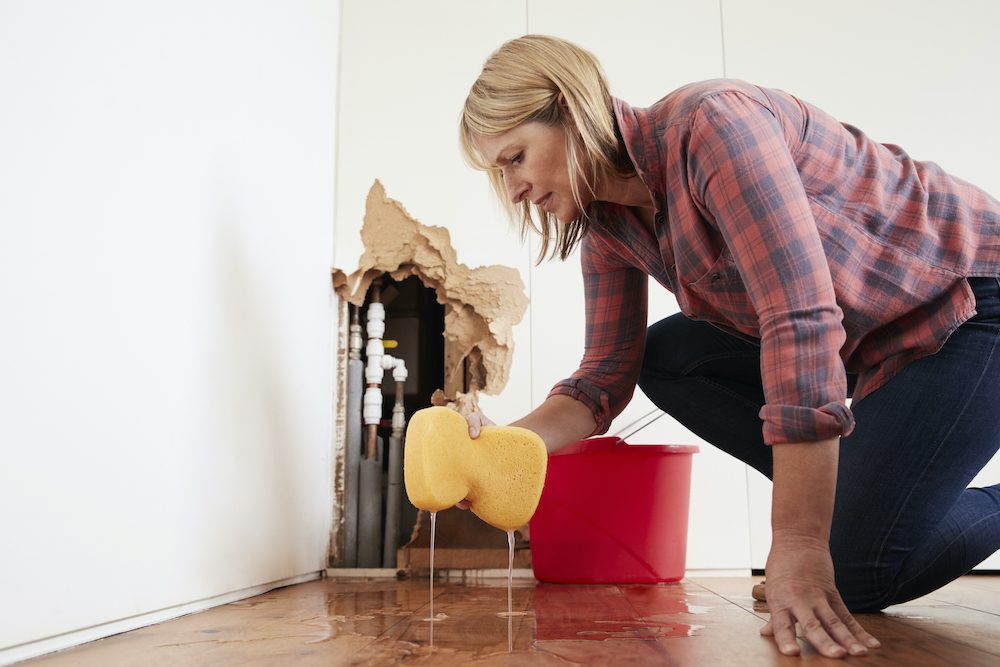Exactly how to Inspect If Your Home Has a Hidden Leak
Exactly how to Inspect If Your Home Has a Hidden Leak
Blog Article
Just how do you actually feel on the subject of Top leak detection hacks?

Early detection of dripping water lines can mitigate a prospective disaster. Some tiny water leakages may not be noticeable.
1. Examine the Water Meter
Examining it is a surefire way that helps you uncover leaks. If it relocates, that shows a fast-moving leak. This implies you may have a slow-moving leakage that might also be underground.
2. Inspect Water Intake
Analyze your water expenses as well as track your water usage. As the one paying it, you must observe if there are any kind of disparities. If you detect sudden changes, regardless of your consumption being the same, it means that you have leaks in your plumbing system. Bear in mind, your water expense must fall under the same range every month. A sudden spike in your bill indicates a fast-moving leak.
A steady rise every month, even with the same behaviors, shows you have a slow leakage that's likewise slowly rising. Call a plumber to completely inspect your residential property, particularly if you feel a cozy area on your floor with piping underneath.
3. Do a Food Coloring Examination
30% comes from toilets when it comes to water usage. Test to see if they are running correctly. Decline specks of food shade in the tank and also wait 10 minutes. There's a leak between the storage tank and also bowl if the shade somehow infiltrates your bowl during that time without flushing.
4. Asses Outside Lines
Don't neglect to check your outside water lines also. Test spigots by affixing a garden hose pipe. Must water permeate out of the connection, you have a loose rubber gasket. Change this and also guarantee all links are limited. It will certainly aid obtain it expertly took a look at and also kept annually if you've got a lawn sprinkler system. One little leakage can throw away lots of water and also increase your water costs.
5. Examine the circumstance as well as check
House owners need to make it a behavior to examine under the sink counters and even inside cabinets for any bad odor or mold and mildew development. These 2 warnings suggest a leak so prompt attention is required. Doing regular examinations, also bi-annually, can save you from a significant trouble.
Inspect for discolorations and also compromising as most devices as well as pipelines have a life span. If you believe dripping water lines in your plumbing system, do not wait for it to intensify.
Early discovery of leaking water lines can minimize a prospective calamity. Some tiny water leakages may not be visible. Inspecting it is a surefire method that aids you discover leaks. One little leak can lose loads of water as well as spike your water expense.
If you believe leaking water lines in your plumbing system, do not wait for it to rise.
WARNING SIGNS OF WATER LEAKAGE BEHIND THE WALL
PERSISTENT MUSTY ODORS
As water slowly drips from a leaky pipe inside the wall, flooring and sheetrock stay damp and develop an odor similar to wet cardboard. It generates a musty smell that can help you find hidden leaks.
MOLD IN UNUSUAL AREAS
Mold usually grows in wet areas like kitchens, baths and laundry rooms. If you spot the stuff on walls or baseboards in other rooms of the house, it’s a good indicator of undetected water leaks.
STAINS THAT GROW
When mold thrives around a leaky pipe, it sometimes takes hold on the inside surface of the affected wall. A growing stain on otherwise clean sheetrock is often your sign of a hidden plumbing problem.
PEELING OR BUBBLING WALLPAPER / PAINT
This clue is easy to miss in rooms that don’t get much use. When you see wallpaper separating along seams or paint bubbling or flaking off the wall, blame sheetrock that stays wet because of an undetected leak.
BUCKLED CEILINGS AND STAINED FLOORS
If ceilings or floors in bathrooms, kitchens or laundry areas develop structural problems, don’t rule out constant damp inside the walls. Wet sheetrock can affect adjacent framing, flooring and ceilings.
https://www.servicemasterbyzaba.com/blog/how-to-detect-water-leakage-in-walls/

As a fervent reader on Hacks to detect leaks, I imagined sharing that short article was worth the trouble. If you please take the opportunity to distribute this entry if you enjoyed it. Kudos for your time. Come back soon.
Report this page